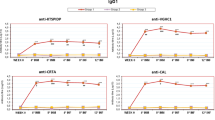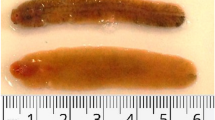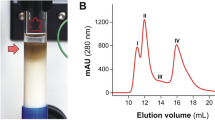Abstract
IT has previously been demonstrated, in single infections of cattle with 200–1,300 metacercariae, that an increase in the infection level does not alter the percentage of the infection which becomes patent and that a few of the flukes are inhibited in the damaged parenchyma, particularly in the ventral lobe where a preferential migration of the parasite occurs1. In subsequent investigations, parasite-free calves were given single infections of 2,500, 5,000 and 15,000 metacercariae and killed 24–56 weeks post-infection.
This is a preview of subscription content, access via your institution
Access options
Subscribe to this journal
Receive 51 print issues and online access
$199.00 per year
only $3.90 per issue
Buy this article
- Purchase on SpringerLink
- Instant access to full article PDF
Prices may be subject to local taxes which are calculated during checkout
Similar content being viewed by others
References
Ross, J. G., Proc. First Intern. Congr. Parasit., Rome (1964).
Author information
Authors and Affiliations
Rights and permissions
About this article
Cite this article
Ross, J. Experimental Infections of Cattle with Fasciola hepatica : a Comparison of Low and High Infection Rates. Nature 208, 907 (1965). https://doi.org/10.1038/208907a0
Issue date:
DOI: https://doi.org/10.1038/208907a0
This article is cited by
-
Infectivity and pathogenicity ofFasciola gigantica in West African dward sheep and goats
Tropical Animal Health and Production (1984)
-
In vivo development of Echinostoma malayanum Leiper, 1911 with notes on effects of population density, chemical composition and pathogenicity and in vitro excystment of the metacercaria (Trematoda: Echinostomatidae)
Zeitschrift f�r Parasitenkunde (1978)
-
Experimental Infections of Cattle with Fasciola hepatica. Challenge Infections
Nature (1966)



